Checkmates – Basics, Rules and Types of Popular Checkmates in Chess
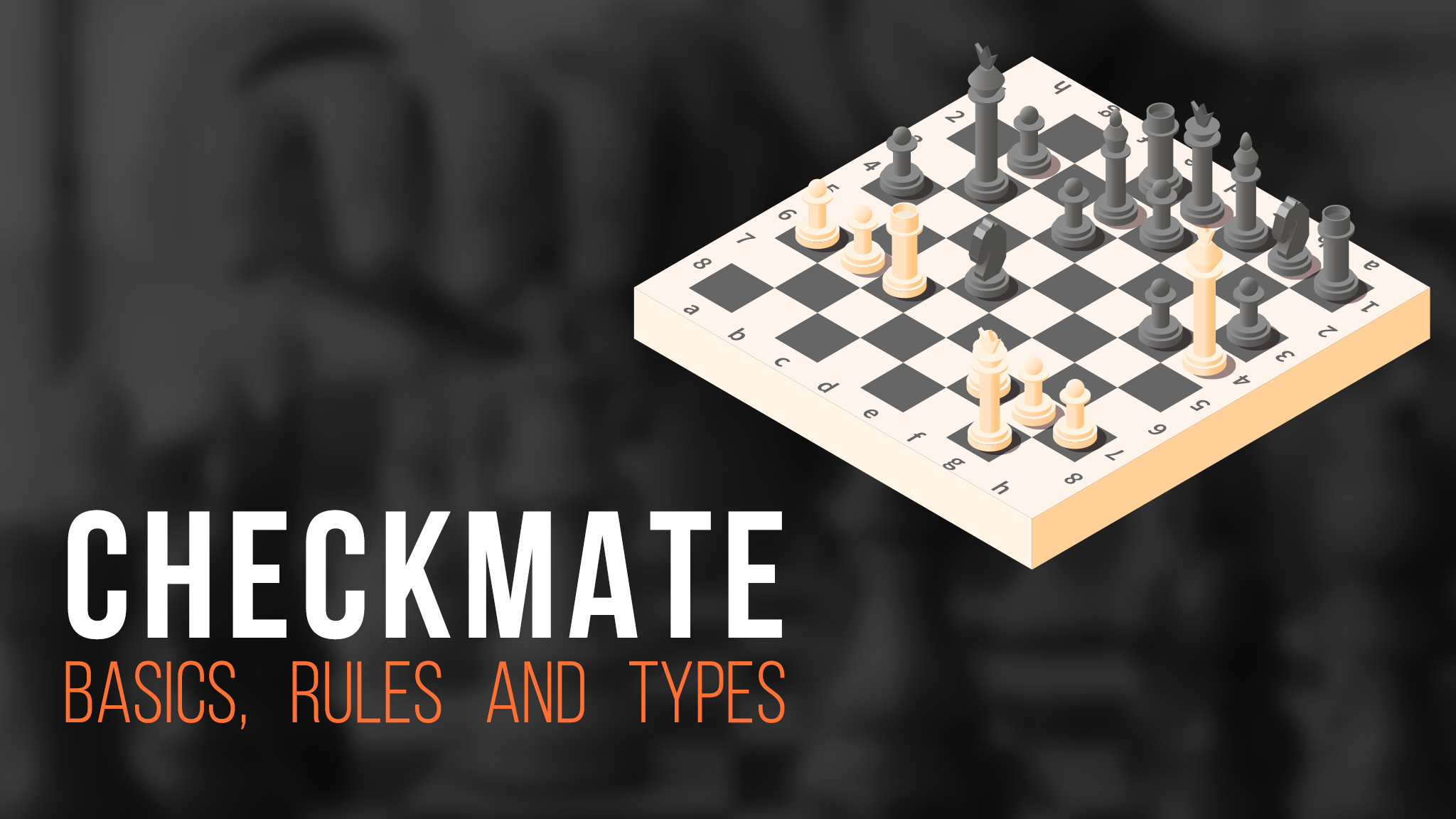
Table of Contents
Definition
A Checkmate is a position in chess where the King is under check and is simultaneously trapped from all sides allowing no escape for the King. Unlike all the other pieces, in chess, one can never capture the King; hence the only way to win a game is to pose a checkmate. Below is an example of a checkmate.
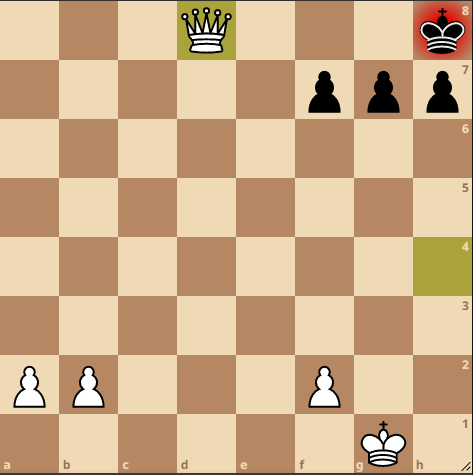
History
Since Chess was invented in India in early Sanskrit chess, the King could be captured to end the game; however, Persians introduced the concept of attacking the King while leaving the King with no square to move to. This term is called ‘check’ in modern chess, and this prevented the game from ending too early. Before the 1600s, the game could be won even by capturing all of the opponent’s pieces leaving the King alone.
Rules
- If the opponent’s King is under a Check, and there is no legal move that the King can make to escape this check, then this position is called a Checkmate.
- A Checkmate is the end goal of the game.
- The King can never be captured, and if the King moves to a square where it cannot move or another piece that cannot move to defend the King when under check is moved, it is termed as an illegal move.
Basic Checkmates
There are 4 basic checkmates involving only the opposite King:
1. Queen and King Vs King
This type of Checkmate involves cornering the opposite King using the long-range advantage of the Queen and then bringing the King in to support the Queen to complete the Checkmate. The following is an example of steps to such a checkmate along with the final position.
The following is the starting position:
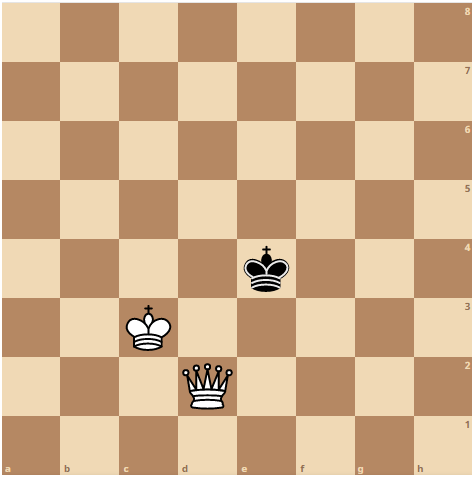
Here are the moves for the checkmate
- Qd3 Ke5
- Qd4 Kf5
- Qe3 Kg6
- Qf4 Kh7
- Qg5 Kh8
- Kd4 Kh7
- Ke5 Kh8
- Kf6 Kh7
- Qg7#

2. Rook and King Vs King
This type of checkmate involves pushing the King to the final rank and bringing the King in, using techniques like opposition to checkmate the King at the edge of the board. The concept of waiting moves may also be used in this type of checkmate.
Here is an example of this type of checkmate.
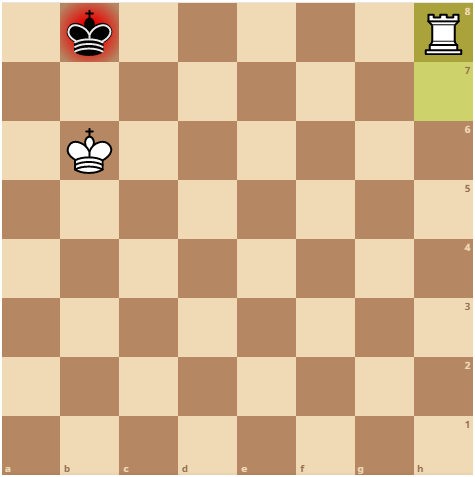
3. Two Bishops Vs King
This checkmate involves cornering the opposite King with the Bishops controlling long diagonals. The Bishops must block squares to push the opposite King to the corner of the board and use the King to support the final checkmate. This checkmate would take 19 moves at the most.
Below is an example of this type of checkmate.
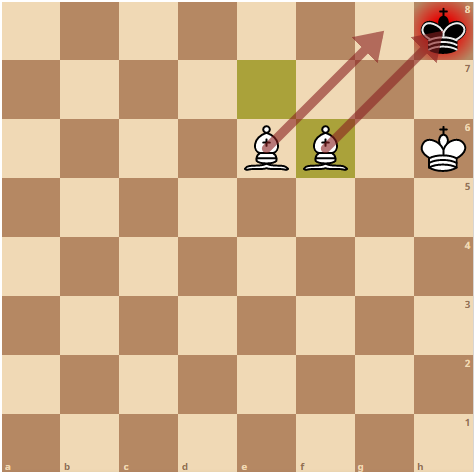
4. Pawn and King Vs King
Completing such a Checkmate is slightly difficult when the pawn you have is on the ‘a’ file or the ‘h’ file. This involves making sure the King is on the 7th file if you are White and the second file if you are Black to allow the pawn to promote into the Queen unobstructed.
The King and the pawn must always be side by side to avoid the opposite King from capturing the pawn.
The following is an example of the same.
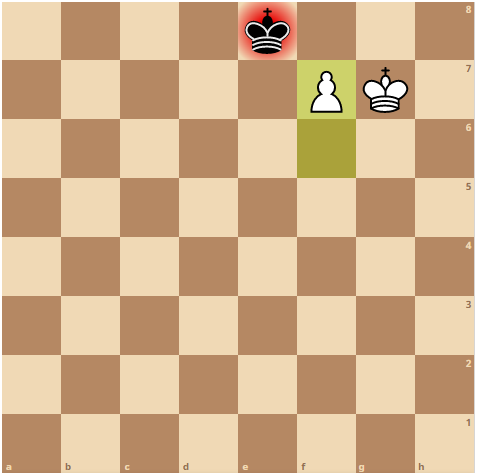
Stalemate
In such end games, there is a possibility for the game to end up in a stalemate. This is a position where the King has no legal move to make and isn’t under a direct check with no other pieces on the board present or capable of making a legal move. This results in a draw where neither sides win or lose and is referred to as a checkmate.
Common Checkmates
Let’s take a look at some simple and common checkmates seen:
1. Fool’s Mate (Two-Move-Checkmate)
This is the fastest checkmate in chess, which allows you to win a game in two moves.
- f3 e6
- g4 Qh4
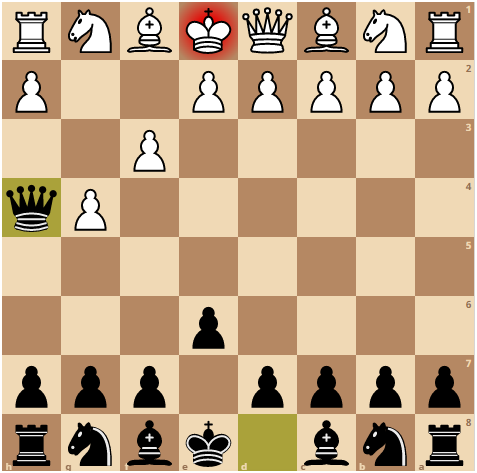
2. Scholar’s Mate (Four-Move-Checkmate)
- e4 e5
- Bc4 Bc5
- Qh5 Nc6
- Qxf7#
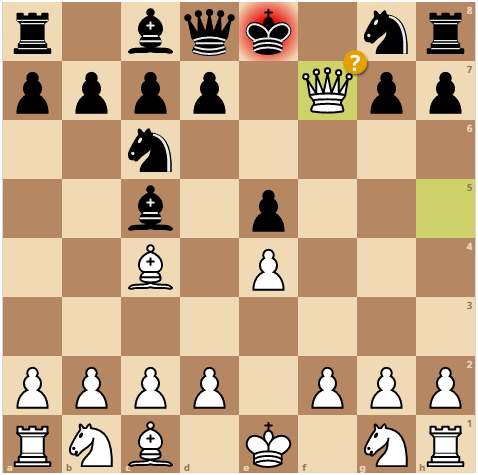
3. Back Rank Checkmate
This is a type of checkmate where a Queen or a Rook poses a checkmate on the last file and the opposite King has no way to escape this check due to a block by pawns or minor pieces.
This will better be explained by the picture below:
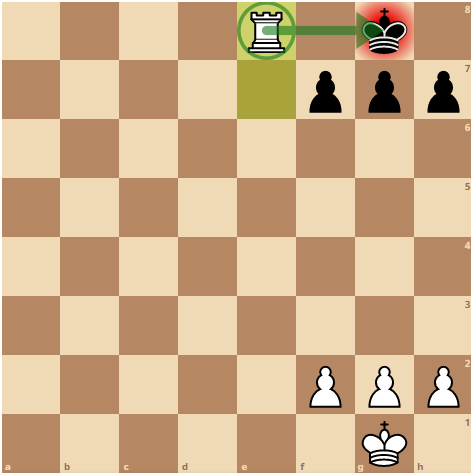
4. Smothered Mate
This is a type of checkmate usually delivered by the Knight where the King cannot move as it is blocked on all sides either by its own pieces or the opponent’s pieces and hence is considered to be ‘smothered’. The King is usually at the corner or the edge of the board to execute this type of checkmate.
Let’s take a look at an example of the Smothered Mate taking place in the opening.
- e4 e5
- Nf3 Nc6
- Bc4 Nd4?!
- Nxe5!? Qg5!
- Nxf7?? Qxg2
- Rf1 Qxe4+
- Be2 Nf3#

5. Anastasia’s Mate
This is a type of checkmate that involves a Rook and Knight that traps the opposite King on the side of the board with the opposite King on one side and one of the King’s pieces on the other side. This name has been adapted from the novel Anastasia und das Schachspiel by Johann Jakob Wilhelm Heinse.
Below is an example of this type of Checkmate.

6. Epaulette Mate
This is a type of checkmate where the two squares for the King to retreat behind, when under check, are occupied by that King’s own pieces. An Epaulette mate is usually seen on the last rank on the board.
The picture below is an example of the same.
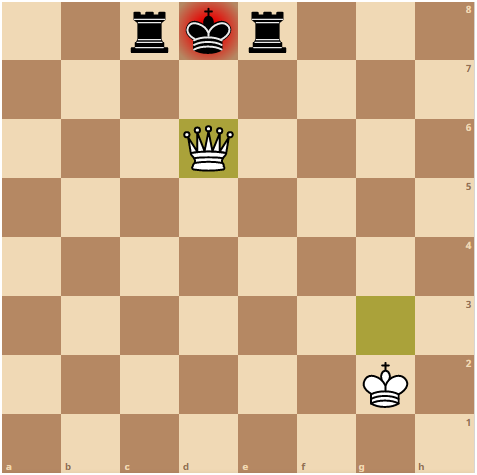
7. Boden’s Mate
This is a checkmate where two Bishops on intersecting diagonals pose a checkmate when the opposite King is obstructed by it’s own pieces. Let’s take a look at the example below.

8. Dovetail Mate
This is also called Cozio’s mate, named after a study by Carlo Cozio where the Queen creates a dovetail by trapping the partially trapped opposite King. Here, thee Queen poses a diagonal attack to pose a checkmate.
The example below will help yo further.
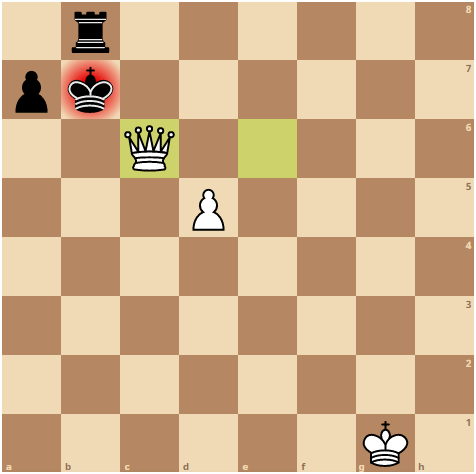
9. Swallow’s Tail Mate
Also known as the Guéridon Mate, this is a common form of a checkmate posed by a Queen that is protected by another piece, while the opposite King’s own pieces restrict the King’s movement.
Let’s take a closer look at the image below.
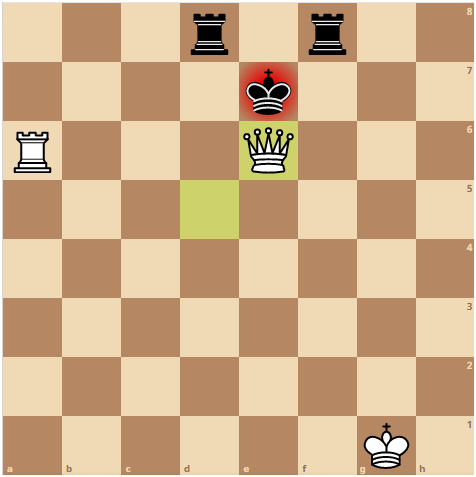
10. Opera Mate
This is a specific form of checkmate posed on an un-castled King on the back rank by a Rook supported by a Bishop. Here the opponent’s own pawn or any other piece other than the Knight restricts it’s movement.
The image below is an example of the same.
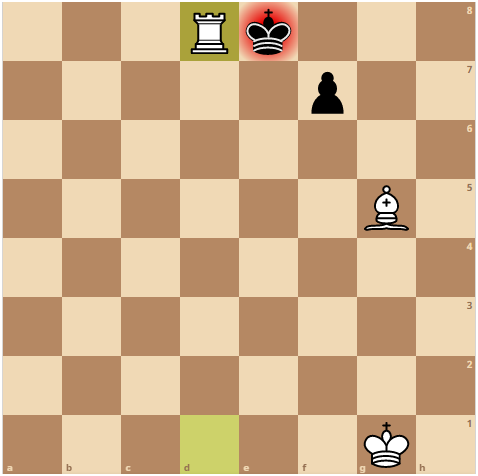
11. Blackburne’s Mate
This is a rare checkmate involving a King trapped by the edge of the board on one side and it’s own piece on the other side, with a Knight and a Bishop pair posing the checkmate.
The image below will explains the same.
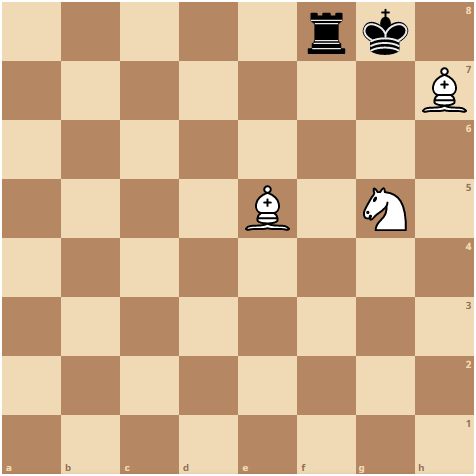
12. Domiano’s Mate
This is said to be one of the oldest and the most classic forms of a checkmate executed by the opposite Queen, backed by a pawn. The mate usually involves sacrificing a Rook first and then posing a check followed by a checkmate on the ‘a’ or ‘h’ file. It got’s name after Pedro Domiano, who first published this checkmate.
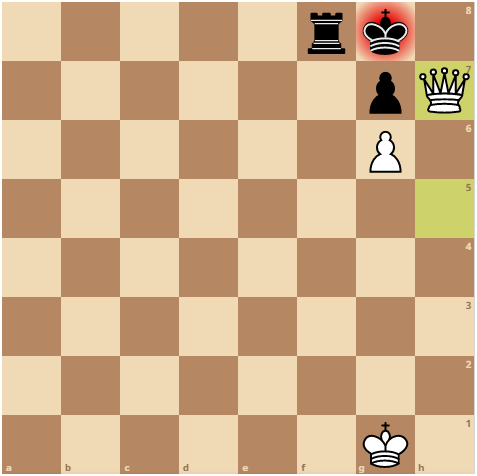
13. Morphy’s Mate
This checkmate was named after the famous World Champion Paul Morphy where the King’s own pawns and Rook restrict it’s movement and the checkmate is posed by a Bishop.
The example below will help you further understand the same.
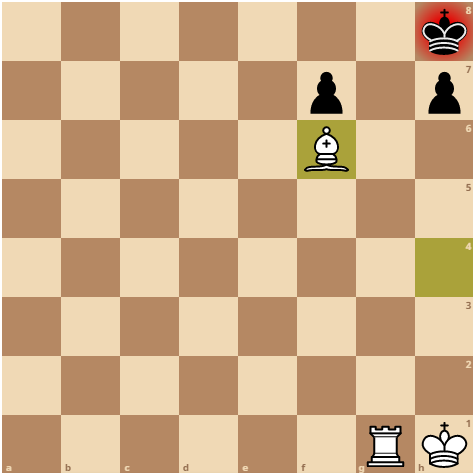
Ultimately Chess is a game of strategy. Each piece on the chessboard presents a unique opportunity to attack, defend, win, or draw. For chess enthusiasts the possibilities are endless, and the moves are both classic and legendary.
If you are a beginner in the game and keen to improve your chess game, then join CHESS KLUB for regular tournaments and online chess classes here: www.chessklub.com/register




